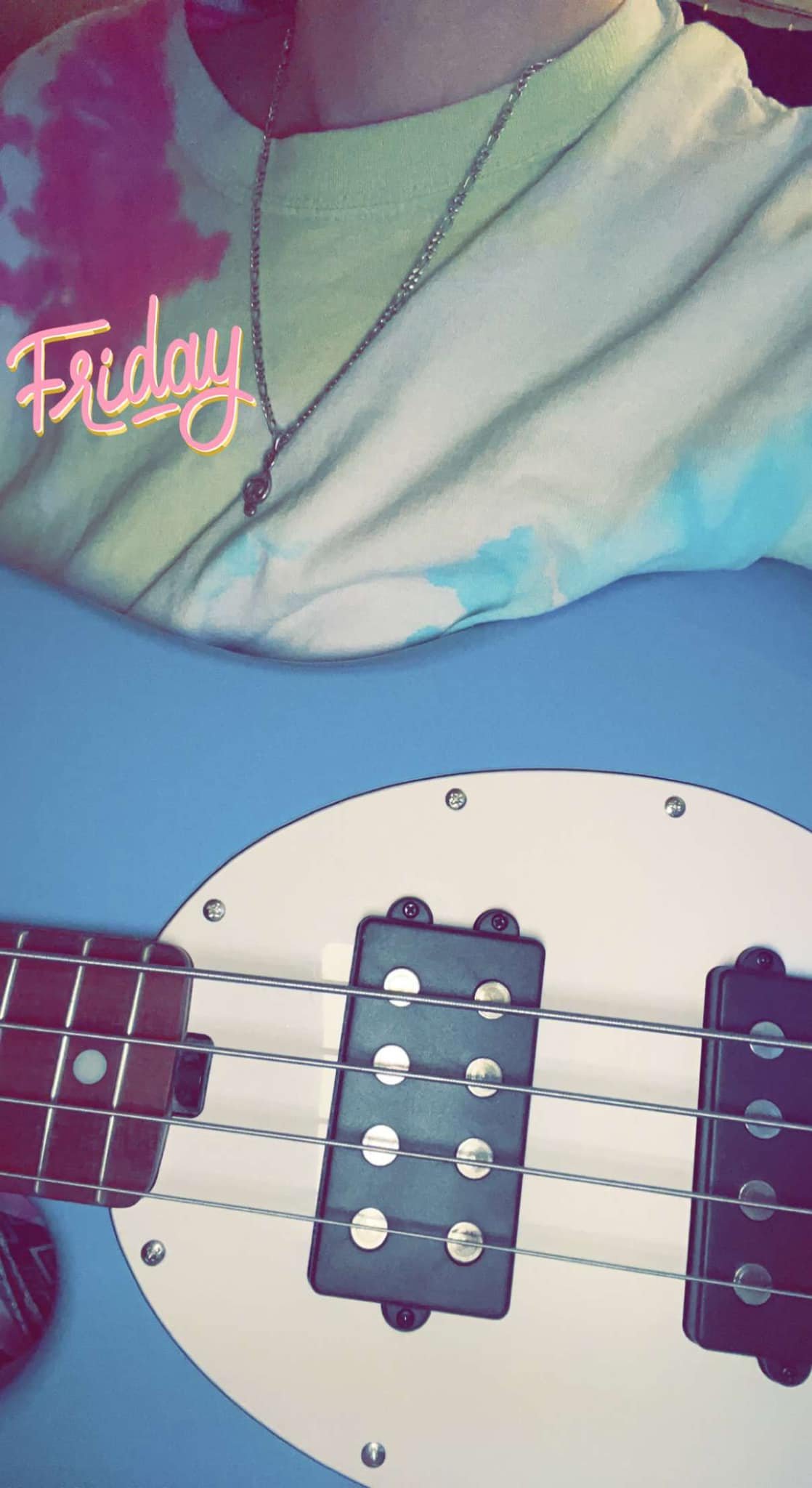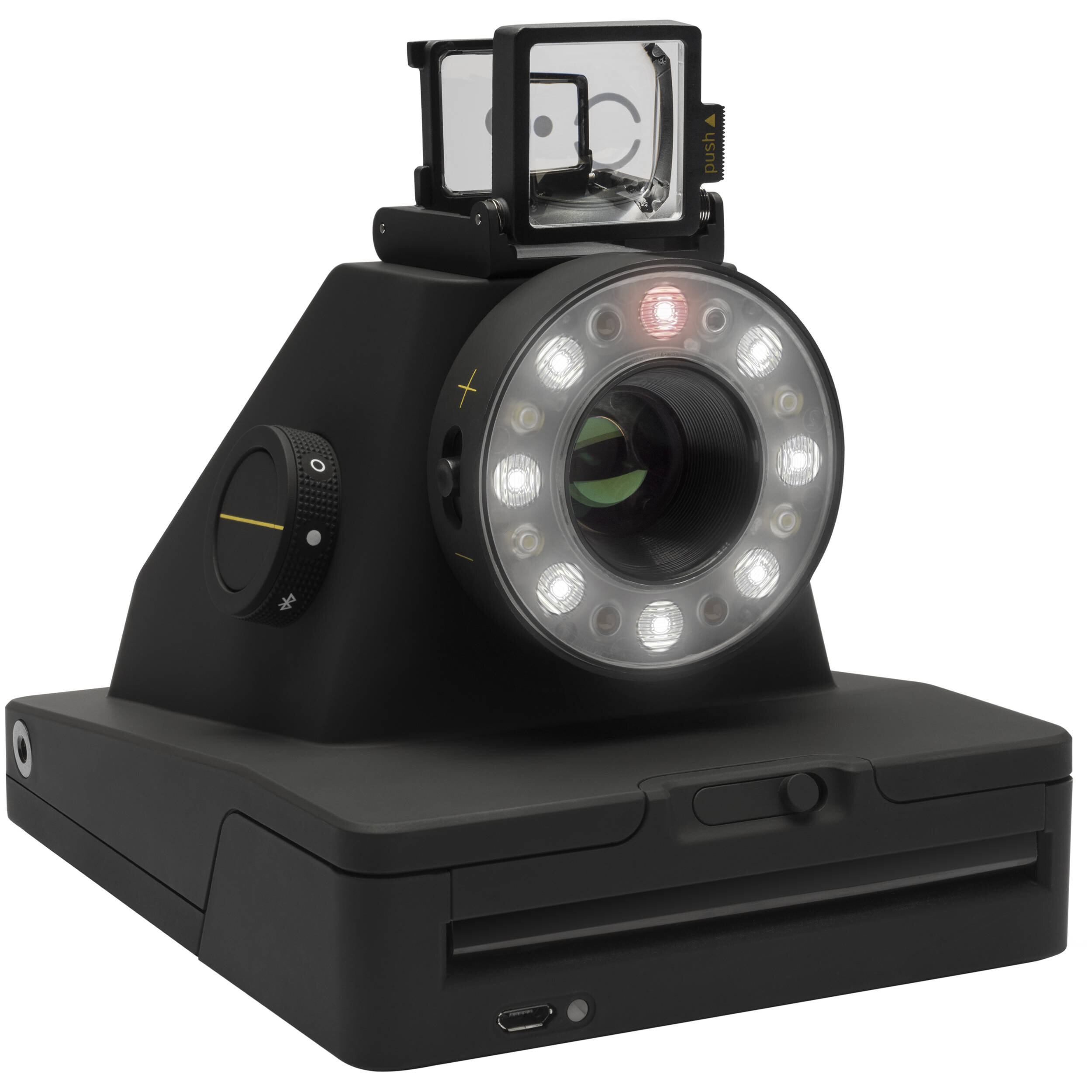There is no doubt in any Polaroid-lover’s mind that shooting Polaroids is a fun experience; however, shooting Polaroids comes with it’s frustrations as well, namely the frustration of shooting a pack of film only to realize there is something wrong with it once the shots develop. We’ve all lost shots for one reason or another, and today I am here to give you a guide to troubleshooting why your Polaroid shots may not be coming out the way you’re hoping they will. Please note that all of the photos being used in this guide are my own and that my answers come from my own experiences with shooting Polaroids and research that has been done over the past 8 years that I’ve been shooting.
Problem: There is a white splotch in the corner of my film.
You can see the pressure fractal near the top left corner.
Solution: This is a “pressure fractal,” which is caused when pressure is put on the film, either when you are pulling it out of the camera or by the camera’s pick arm putting pressure on it during ejection. If you are seeing them in the upper left-hand corner every time, then this is almost certainly a pick arm issue; if you are seeing it in other areas of your photo, then you are probably putting pressure on the film while it is developing/bending the film when taking it out of your camera. It can also be the result of a manufacturing error.
Problem: There are brown/undeveloped areas on my photo.
This film was very out-of-date when I shot it, and the developer paste on the left-hand side was completely dried up, resulting in two-thirds of the image coming out brown.
Solution: This issue is caused by the developer paste not spreading over the entire surface area of the photo. This is typically the result of the film’s developer pods/paste drying out, which happens as your unused film sits — in short, your film is likely expired. You can circumvent some of this by storing your film in the refrigerator, which is recommended (especially if you buy film in bulk and don’t plan on using it immediately) because it helps your unused film to last longer.
The other, less likely issue is that your camera’s rollers are not spreading the developer paste evenly, which is an issue that would require the camera to be serviced.
Problem: The film development is uneven/there is banding in my photos.
You can see a green band over the left third of the image, which, in this case, was caused by the film being expired.
Solution: This is another film developer issue that is caused by the developer not spreading evenly across the photo. Again, the most likely cause is your film being expired or being improperly stored, though it can (but is unlikely to) be the result of a camera roller error.
Problem: There are blue/white streaks on my film/my film has a horizontal streak along the top.
One of my favorite examples of opacification failure from early on in my Polaroid journey; you can see the “lightning” streaks all over this image and where sunllight hit the top of the film as it ejected (this camera’s frog tongue doesn’t work well and needs to be replaced).
Solution: These streaks are the result of an opacification failure, wherein the the layer that protects your film from light once it is ejected from the camera doesn’t have time to mix and spread before the photo is exposed to light when you pull it out of your camera. The streak along the top is caused by light hitting the top part of the photo before it has begun to develop (which makes sense, because the top is the part that ejects from the camera first). A frog tongue is the best way to prevent this error, as it protects your photo from light when it ejects. I suggest leaving your film under the tongue for 10-15 seconds after it has ejected to prevent light from hitting it prematurely. This could also be an issue with your rollers not spreading film chemistry evenly, so make sure to keep those clean. According to some users, this could also be a batch issue; I do notice this problem less frequently with newer film than I did with film a few years ago, so there could be something to this answer as well.
Problem: My photos are coming out with a blue or orange/pink tint and are “pale.”
The greenish-blue tint in this Polaroid suggests it was developed in too cold of an environment — which is obvious, based on the (rare in Alabama) snow depicted in the image.
As always, the danger of shooting at the beach is that it’s usually hot, which causes issues. Here, you can see the orangey tint the photo has due to being developed at too high of a temperature.
Solution: A blue tint with low color saturation means they were developed in too cold of an environment, and an orange or pink tint with low saturation means that they were developed in too warm of an environment. Polaroid film does best when it is developed at temperatures between 55 and 82 degrees Fahrenheit. Also, make sure your camera itself isn’t too hot or cold, as this affects the film! The orange/pink/red tint can also happen if you run your film through x-ray scanners (say, at the airport), so make sure to ask that your film be hand-checked when traveling by air (developed photos can go through x-ray scanners safely, but your unexposed film should not). Different batches of film may also run warmer or cooler (in tint, not in temperature), so, if the saturation is good, it could simply be that the film chemistry itself has a warm or cool tint.
Problem: My photos are coming out too light/too dark.
This photo is “pale” due to overexposure.
This photo is dark due to underexposure.
Solution: This is likely an exposure error. One solution is to adjust the exposure level on your camera. If you are shooting in a bright environment, you need to turn the exposure down/turn off the flash, and if you are shooting in a dark environment, you need to turn the exposure up/turn on the flash. Your photo being overexposed could also be caused by light hitting the film too soon after ejection or by the subject being too close to the camera and becoming overexposed by the flash. Underexposure can also be caused by the camera’s light meter being faulty. What I’ve found is that each of my Polaroids works a little differently and that, once I get to know that camera’s quirks when it comes to exposure, I can compensate for them and nail exposures more frequently.
This is not an all-inclusive list of issues you may encounter, but these are some of the most common ones I’ve seen over the 8 years I’ve been shooting Polaroids. Thankfully, most of these problems are easily solved and can be put down to “user error,” and, the more experience you gain, the more likely you are to achieve consistent results. Personally, I like “flaws” in my Polaroids, so sometimes I’ll manipulate factors hoping for more “experimental” results — it’s all about what you’re looking for when you shoot.
I hope you found this guide useful and, if you have any questions, leave me a comment or contact me via the “contact” link at the top of the page. Thanks for reading!


































































